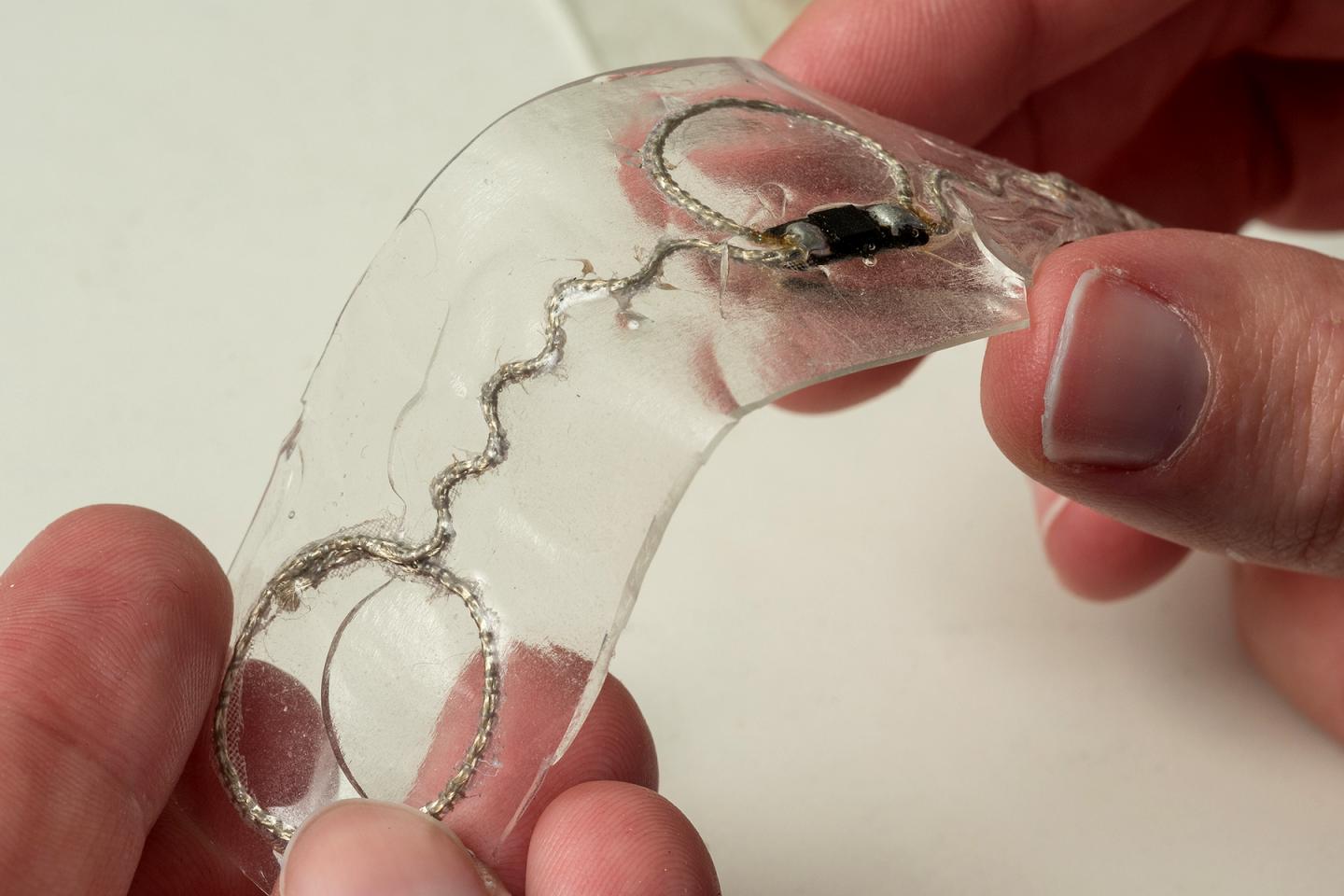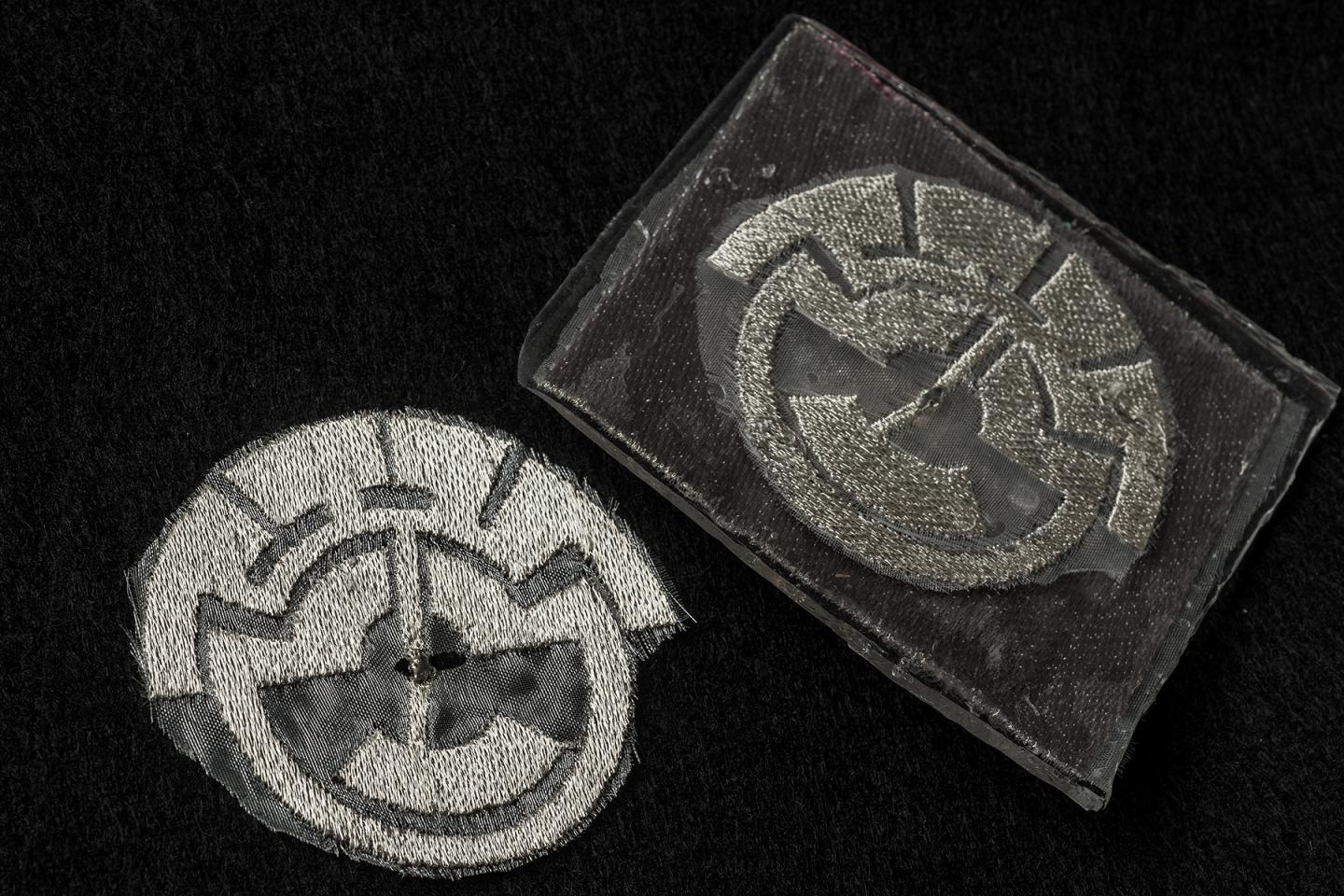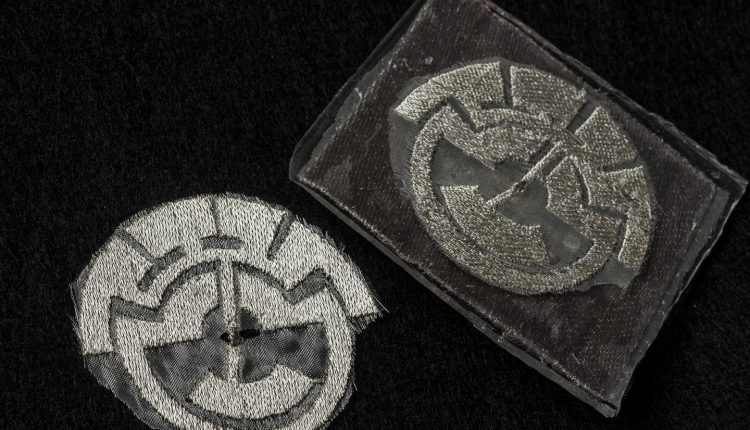Researchers embroider circuits into fabric for electronic clothing
A team of researchers from Ohio State University have brought functional textiles one step closer to reality by embroidering circuits into fabric with 0.1 mm precision.
The new milestone is a perfect way to integrate components like sensors and memory devices into clothing lines. With just a little more work, the team could soon develop shirts that double as antennas for a smartphone or tablet or even workout clothes that monitor fitness levels.

The team even envisions medical uses like bandages that can determine how well tissue is healing and hats that sense brain activity.
John Volakis, director of the ElectroScience Laboratory at Ohio State and research scientist Asimina Kiourti are currently using the development to make brain implants to treat conditions like epilepsy and addiction and eliminate the need for external wiring.
“A revolution is happening in the textile industry,” said Volakis. “We believe that functional textiles are an enabling technology for communications and sensing — and one day even medical applications like imaging and health monitoring.”
The functional textiles, called “e-textiles,” are created with a traditional tabletop sewing machine that embroiders thread into fabric automatically based on patterns loaded into a computer file. Instead of using thread, the researchers use fine silver metal wires that feel the same as traditional thread.
“We started with a technology that is very well known–machine embroidery–and we asked, how can we functionalize embroidered shapes? How do we make them transmit signals at useful frequencies, like for cell phones or health sensors?” said Volakis. “Now, for the first time, we’ve achieved the accuracy of printed metal circuit boards, so our new goal is to take advantage of the precision to incorporate receivers and other electronic components.”
According to Kiourti, the shape of the embroidery will determine the frequency of operation of the antenna or circuit.

For example, one broadband antenna consists of more than 12 interlocking geometric shapes that are just bigger than a fingernail and form a circle with a diameter of just a few inches. Each piece of the circle transmits energy at a different frequency, so that they cover a broad spectrum of energies when working together.
“Shape determines function,” said Kiourti . “And you never really know what shape you will need from one application to the next. So we wanted to have a technology that could embroider any shape for any application.”
Initially, the team’s goal was just to increase the embroider precision, but found that they needed to work with threads that had a 0.1-mm diameter, made with only seven filaments. Each filament is composed of copper and enameled with silver. This new development proved to be 24 times less expensive than the the material they had been working with two years prior.
Previously they had to stack thicker thread in two layers in order for the antenna to carry a strong electrical signal, but with the new method,they only needed one layer of finer thread. Now the process takes half the time, about 15 minutes, to create a broadband antenna like the one mentioned here.
She’s also incorporated some techniques common to microelectronics manufacturing to add parts to embroidered antennas and circuits.
The researchers have come up with multiple prototypes so far: one antenna looks like a spiral and can be incorporated into clothing for improved cell phone signals, another is stretchable and has a RFID chip, and another circuit was developed in the shape of an “O” to prove that they could make the e-textiles decorative, too.
Their tests proved that an embroidered spiral antenna about six inches across could transmit signals at frequencies of 1 to 5 GHz with near-perfect efficiency.
The developments bring us one step closer to clothing that can boost smartphone or tablet performance.


Comments are closed, but trackbacks and pingbacks are open.